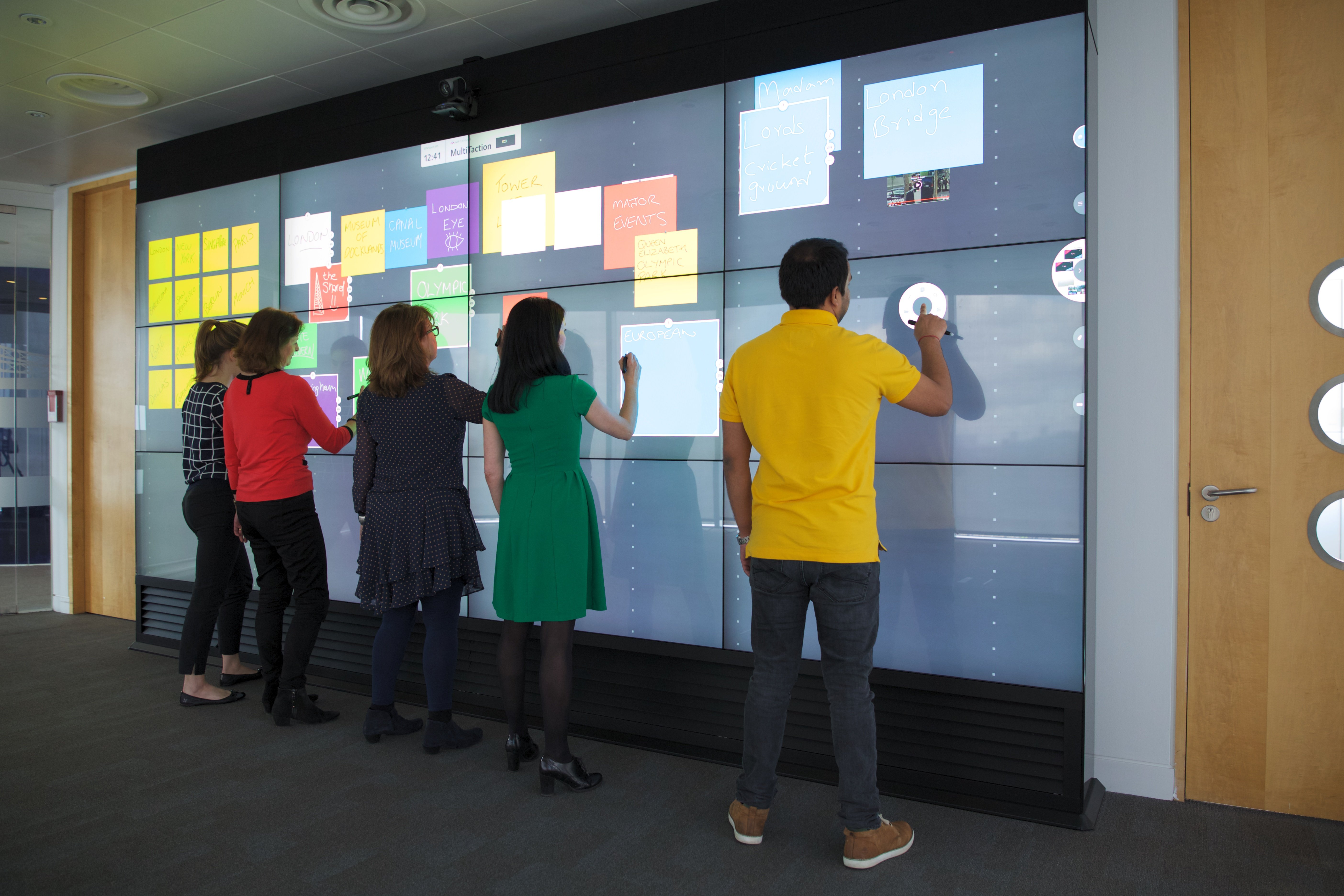

The first step in a successful audio visual presentation system integration is finding the right av solution to meet your needs. Those unfamiliar with key aspects of audio visual technology might settle on the lowest cost option or the biggest screen possible for the space. After all, the biggest, most affordable TV on the market is the best option, right? Well, not exactly.
Each presentation has a unique set of requirements. It's these requirements that have a unique set of challenges such as limited physical space, overall physical size, image quality, and budget. Only an integration company with a vast amount of experience and knowledge will be able to design and provide a system that fulfills all of these requirements.
There are many products that can be used in flat panel arrays. The goal of your AV integrator is to design the right solution to meet the desired requirements. The key is to find the best product that meets all of your desired requirements that still fits within your budget.
A LCD flat panel array is a group of LCD panels combined to create a larger image size where the array acts as one single, large display. These LCD panels are very specialized and designed with very thin frames (1 mm or less) to minimize the visible lines between displays. Higher quality arrays can also provide automatic color-matching between screens.
Why would someone want a group of LCD panels over a single large display? Often, a group of LCD panels are preferred when a single large display is either too expensive or does not meet the size requirement.
Why would your AV integration partner use LCD flat panel arrays over a projector solution? There are several key reasons:
For example, this technology is common in broadcast news. The next time you watch the news, an anchor will most likely be standing in front of an LCD flat-panel array.
Low maintenance LCD displays can last 5-10 years without any failures. In the event of a display failure, many LCD flat panel arrays are designed for quick exchange and functionality can continue in the absence of a panel.
In addition, multi-touch capability offers interactivity with the displays which can help with presentation and collaboration within groups.
LCD screens are designed to run 24/7 without affecting reliability. This is important in digital signage and control room applications.
This is far from a full list of benefits associated with LCD flat-panel arrays. Overall, the technology is one of the most popular options for corporate spaces because it offers the most flexibility allowing for sizes of any kind, as well as interesting shapes including curved arrays and even non-rectangular architectural configurations.
The most prominent drawback to a LCD flat panel array are bezels. Bezels are what hold the panels together and can lead to visible lines in the overall display. Bezels are like the frame on a mounted picture — it holds everything together, but is not part of the image.
Every year bezel width is reduced, and a zero-bezel gap is a prospect of the future, but at this time, some level of mullion is a necessary element of LCD flat panel arrays. These mullions are more of a consideration when viewing large scale models where gaps in the image would be undesirable, and less important for control room and other integrations.
In conclusion, LCD flat panel arrays are a very viable solution because of their versatility, adaptability, and scalability. To learn more about the advantages of LCD flat panel arrays, Contact IGI.